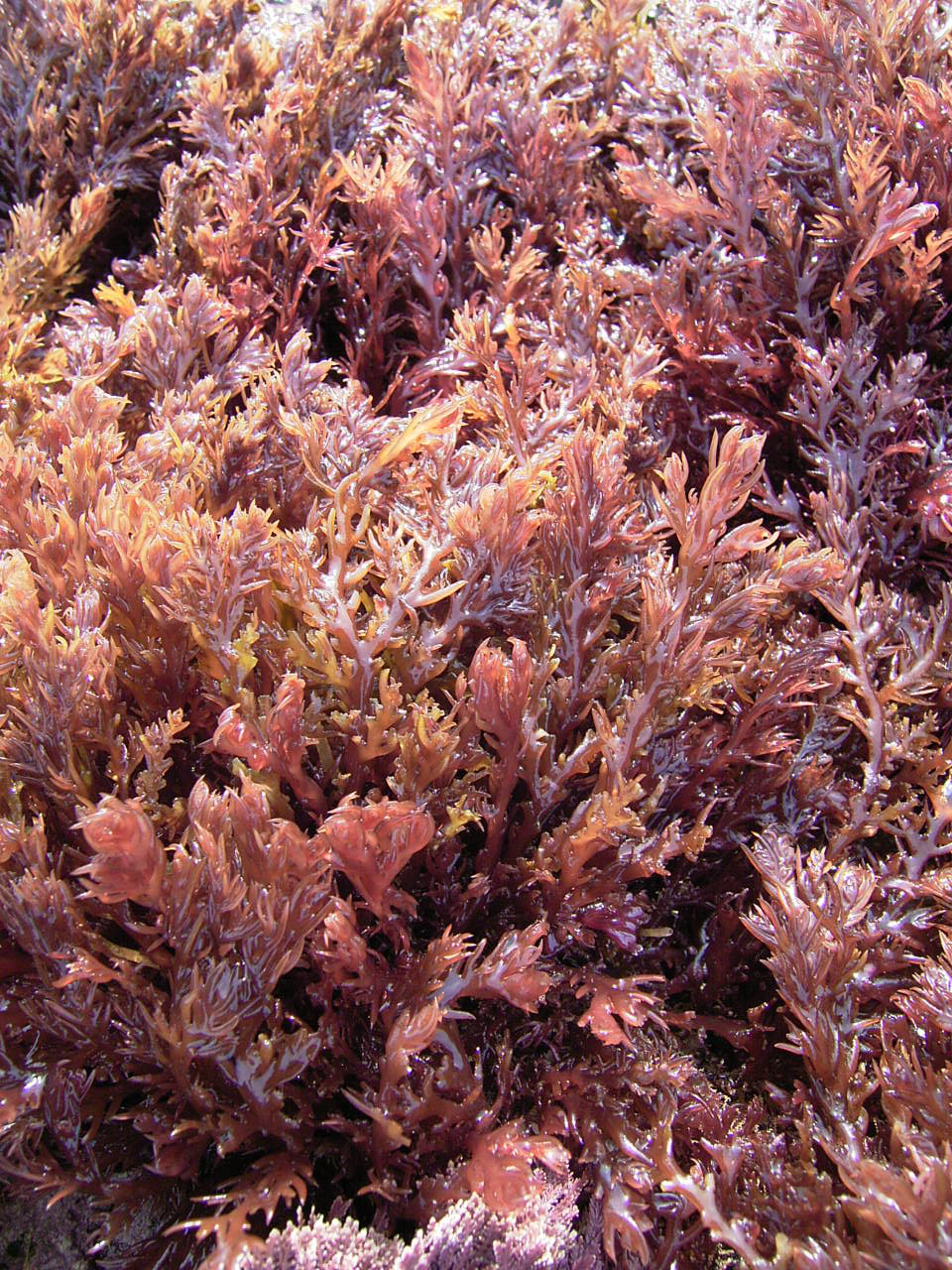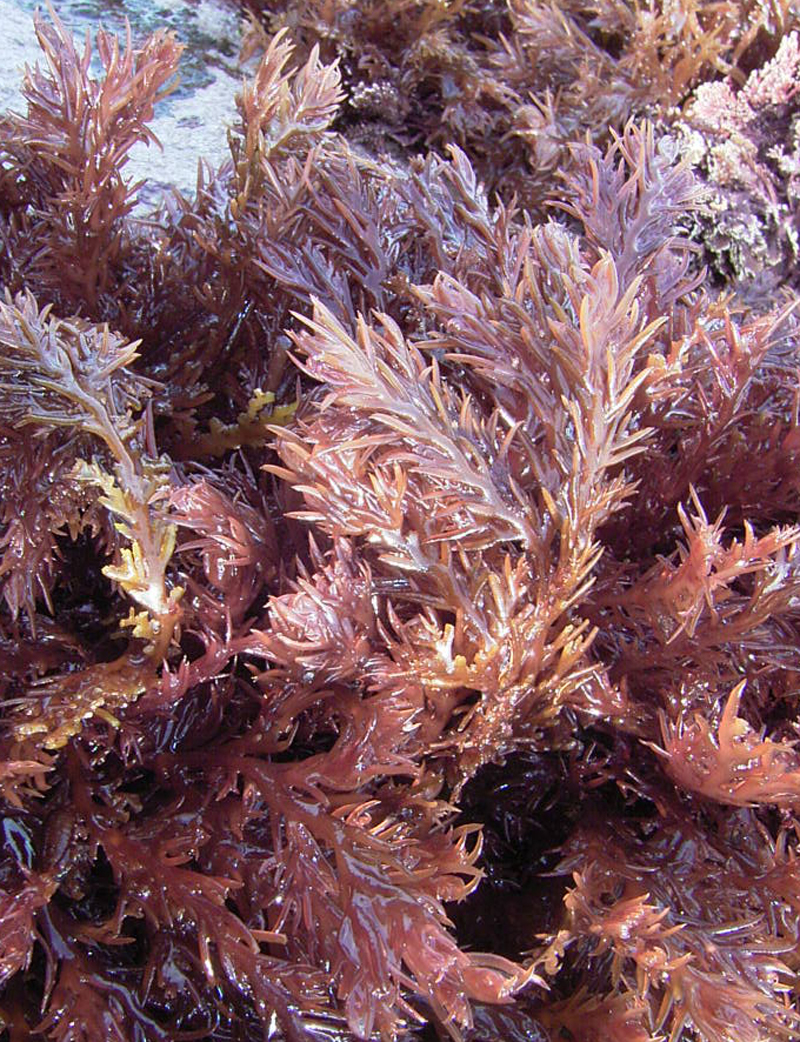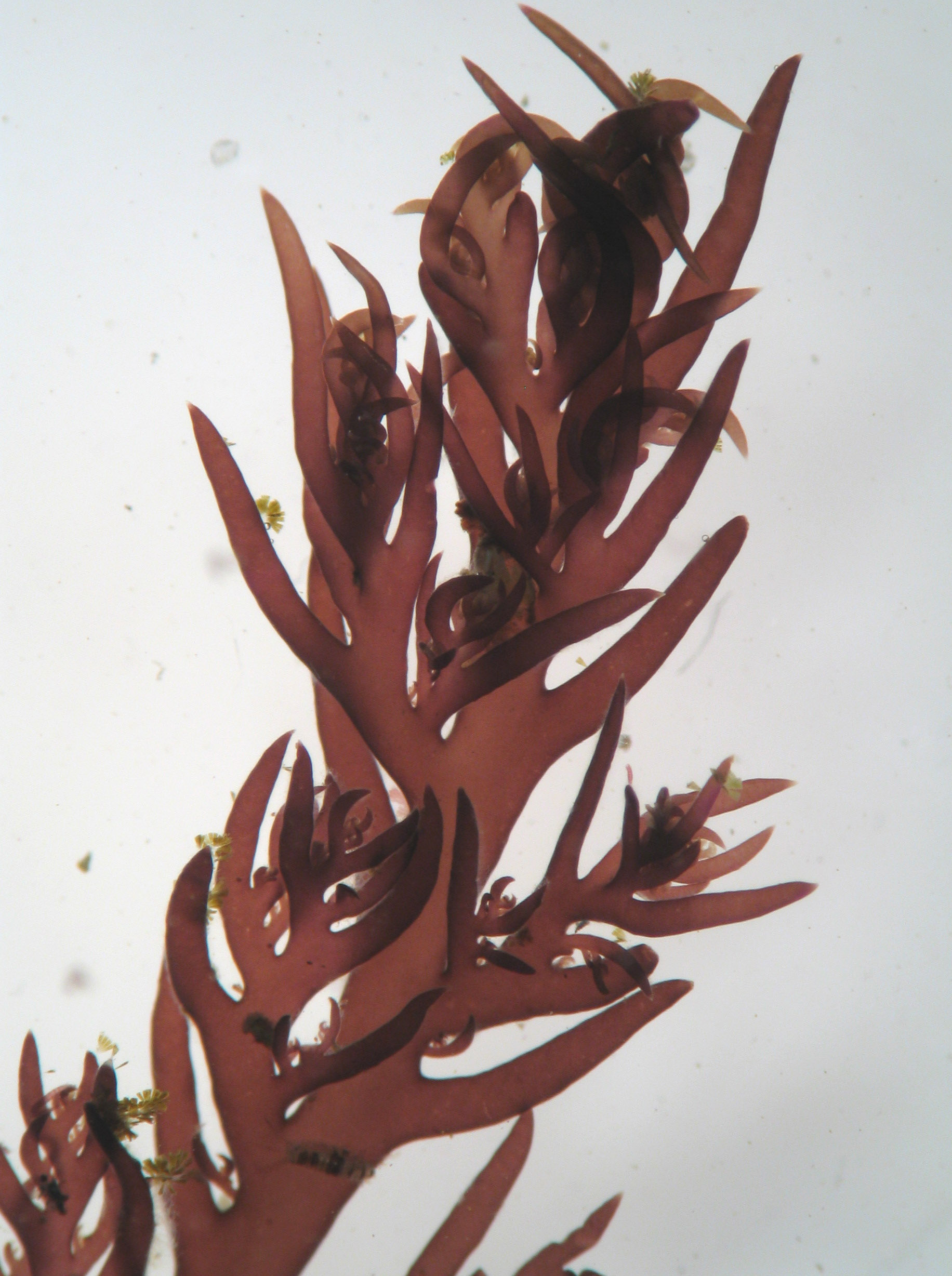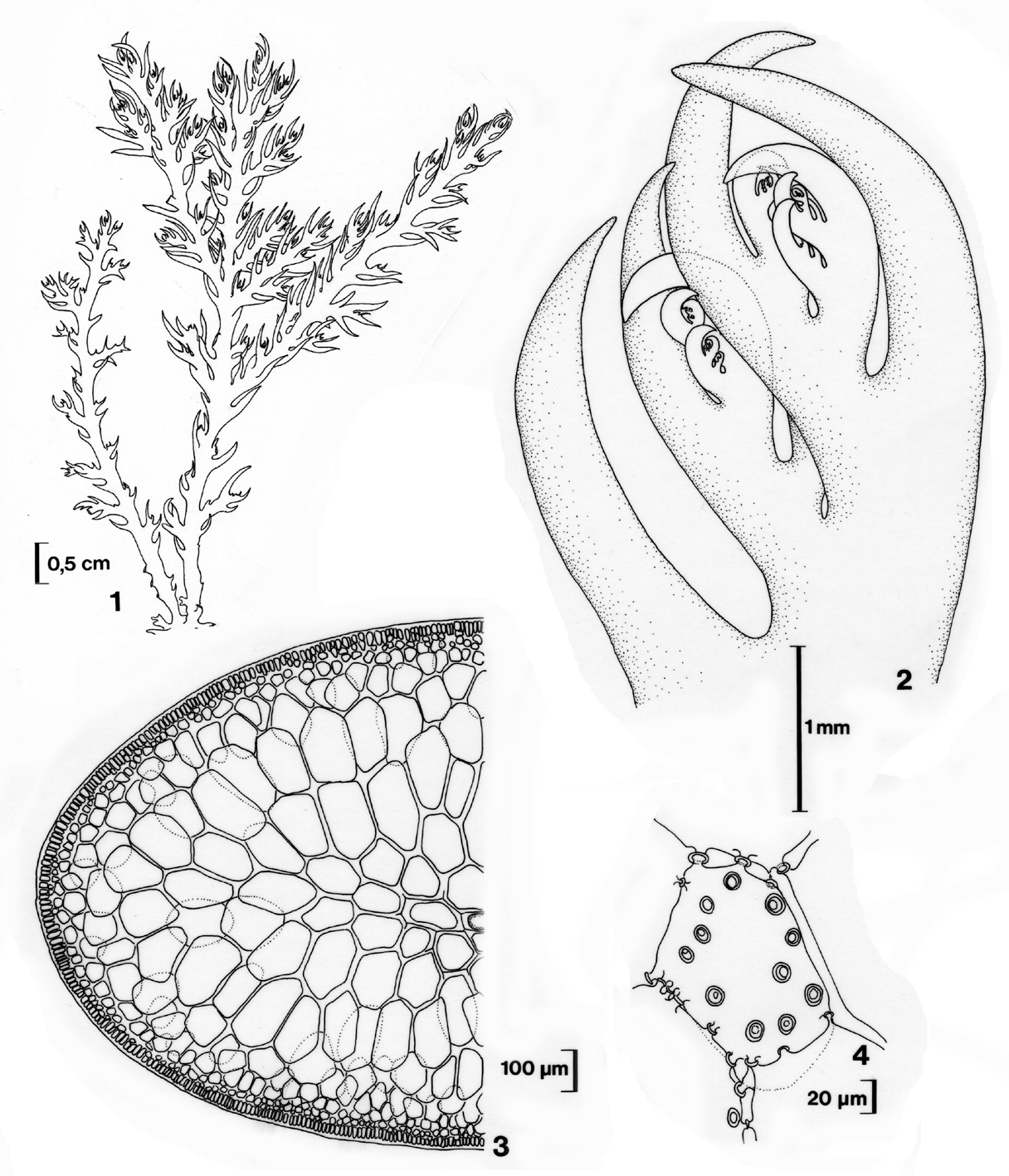Seaweeds of the South African South Coast


Order Gigartinales
Family Plocamiaceae
Plocamium cornutum (Turner) Harvey 1849 (1847-1849): 123
Plants reddish-brown, fairly robust, up to 20 cm tall, often in clumps or swards. Holdfast stout, branched, stoloniferous; erect axes terete, up to 1.5 mm in diameter, not complanate; main axes sparsely branched, alternating pectinate series of laterals comprising one simple and one compound branch; lower lateral awl-shaped, simple, up to 1 mm wide at the base and to 1 cm long, juveniles rather incurved; upper laterals compoundly branched; laterals somewhat crowded, overlapping, appearing to arise on all sides of axes. Reproductive structures clustered in axils of laterals.
Collections ecology and regional distribution
Recorded from Namibia along the west coast and as far as the Kei Mouth area on the south coast (1-43). Epilithic in the mid to lower eulittoral on wave-exposed shores.
World distribution: A southern African endemic.
Type locality: Cape of Good Hope, South Africa (Turner 1819).

Plocamium cornutum, Arniston, in lower eulittoral zone.

Plocamium cornutum.

Plocamium cornutum, detail of frond.

Plocamium cornutum. 1. Habit. 2. Thallus apex. 3. Cross section of main axis. 4. Detail of medullary cells (note numerous sedcondary pit connections). Reproduced from Stegenga et al. (1997).
References Plocamium cornutum
Harvey, W. H. 1849 (1847-1849). Nereis australis. London, 125 pp., 45 pls.
Stegenga, H., Bolton, J.J. & R. J. Anderson. 1997. Seaweeds of the South African west coast. Contributions from the Bolus Herbarium 18: 655 pp.
Turner, D. 1819. Fuci. Vol. 4. London, 153 + 7 pp., pl. 197-258.
Cite this record as:
Anderson RJ, Stegenga H, Bolton JJ. 2016. Seaweeds of the South African South Coast.
World Wide Web electronic publication, University of Cape Town, http://southafrseaweeds.uct.ac.za; Accessed on 14 December 2025.